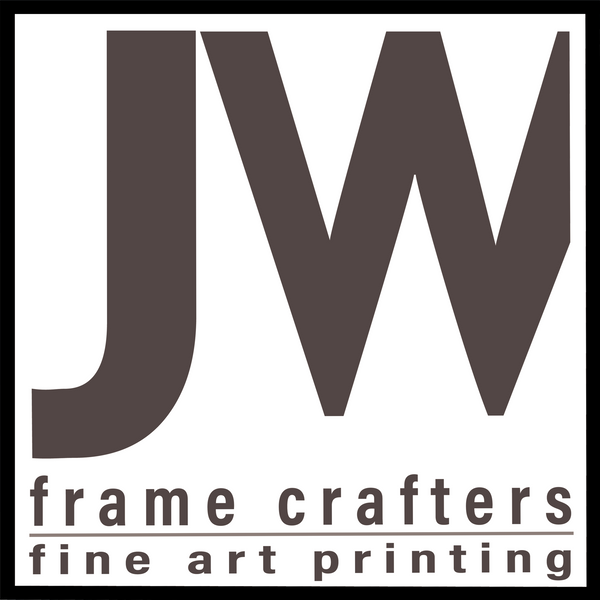The Anatomy of a Frame: Understanding the Parts That Protect and Showcase Your Artwork
When you look at a beautifully framed piece of art or a cherished photograph, what you see is only the surface of a much larger picture. A custom frame is more than just wood or metal around an image—it’s a carefully engineered package of parts, each with a specific role in protecting, preserving, and displaying your artwork.
Here’s a detailed look at the anatomy of a frame and why working with a professional custom framer makes all the difference.
The Frame Moulding
The moulding is the visible outer structure of the frame, setting the style and strength of the finished piece. Quality mouldings are typically crafted from wood or aluminum metal, each offering distinct benefits. Wood brings warmth, character, and timeless craftsmanship, while aluminum provides sleek, modern lines with lightweight durability.
Each section of a frame—top, bottom, or sides—is called a leg or a rail. Together, these rails form the structure that holds your artwork securely.
An essential feature of moulding is the rabbet—the recessed lip on the inside back edge of the frame. The rabbet acts like a hidden shelf, holding the entire “art package” (glazing, matting, artwork, mounting board, and backing). The depth of the rabbet determines what the frame can accommodate, from simple prints with a single mat to thick canvases or layered mats.
Frames are constructed by cutting lengths of moulding to precise dimensions. For wood frames, corners are joined with high-strength wood glue, secured either by a traditional corner vise and nails or by using an underpinner, a machine that inserts wedge-shaped nails for a strong, clean join. Both methods are widely accepted in professional framing.
Metal frames are joined with specialized hardware that slides into channels in the rails, where tension and friction lock the corners firmly in place. The result is a secure, lasting frame that’s both functional and stylish.
The Matting
Matting enhances both the aesthetic appeal and preservation of framed artwork. By creating visual space, mats draw the eye inward and highlight the art, while also ensuring the artwork never comes into direct contact with the glazing.
A professional framer will only use Conservation-grade or Museum-grade matting:
- Conservation-grade matting is made from 100% virgin alpha-cellulose fibers that are acid-free and lignin-free. Buffered with calcium carbonate, these mats neutralize acids and protect artwork from airborne pollutants. They meet or exceed Library of Congress preservation standards, making them ideal for fine art, documents, and photographs.
- Museum-grade matting is the highest archival standard, crafted from 100% cotton for unmatched purity and durability. These mats are thicker, sturdier, and naturally acid-free. They resist acid migration and yellowing, ensuring irreplaceable works remain protected and visually flawless for decades—even centuries.
The choice between conservation and museum mats depends on the value and importance of the piece, but both ensure your artwork is preserved in an archival environment.
The Glazing (Glass or Acrylic)
Glazing may look like plain glass, but it’s one of the most critical components of framing. It shields artwork from dust, moisture, physical contact, and harmful UV light that causes fading.
We use only trusted Tru Vue® glazing options, selected based on the needs of each piece:
- Conservation Clear® Glass – 99% UV protection with crystal-clear visibility.
- Museum Glass® – 99% UV protection plus anti-reflective clarity, virtually eliminating glare.
- UltraVue® Glass – 70% UV protection with reduced reflections, best for items out of direct light.
- 99% UV Protective Acrylic (Plexiglass) – Lightweight, shatter-resistant, and safe for larger pieces or shipping.
- Optium Museum Acrylic® – The finest option available: 99% UV protection, anti-reflective, abrasion-resistant, and shatterproof with unparalleled clarity.
By choosing the right glazing, your artwork is both beautifully visible and fully protected.
The Mounting Board
The mounting board is the unseen foundation that keeps artwork flat and stable. Without proper mounting, pieces may ripple, warp, or become damaged over time.
We use only acid-free foamboard for structural support and long-term preservation:
- Limited edition prints and original artwork are often floated on acid-free board, keeping edges visible and avoiding adhesives for full reversibility.
- Photographs, posters, and artwork requiring structure are mounted to acid-free foamboard with a heat-activated, acid-free adhesive. This creates a smooth, permanent bond that prevents rippling while maintaining archival quality.
Every mounting method is chosen with care, balancing the needs of the artwork with the goal of preservation.
Backing & Finishing
The final step of framing ensures your artwork is sealed, secure, and ready to display.
- Dust Cover & Sealing – An acid-free paper dust cover is applied to the back of the frame, protecting against dust, insects, and pollutants.
- Securing the Package – Flexible points or framer’s tabs hold the contents snugly but allow for safe reframing if needed.
- Hanging Hardware – Professional hardware is matched to the weight of the frame. From sawtooth hangers to heavy-duty D-rings with wire, each installation is designed for strength and stability.
- Protective Bumpers – Small felt or rubber bumpers at the corners keep the frame level, protect walls, and allow air circulation behind the piece.
Though often unseen, these details ensure your frame is not only beautiful but also durable and safe for years to come.
More Than Just a Frame
A custom frame is a combination of art, science, and craftsmanship. From the moulding and rabbet to the matting, glazing, mounting, and finishing touches, each part plays a role in preserving and showcasing your artwork.
By working with a professional framer who uses archival materials, expert techniques, and trusted products, you can be confident that your treasured memories and valuable artwork will be protected and enjoyed for generations
